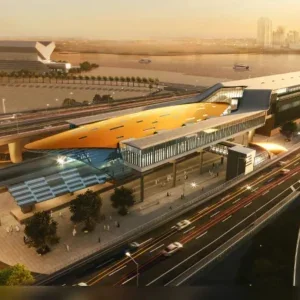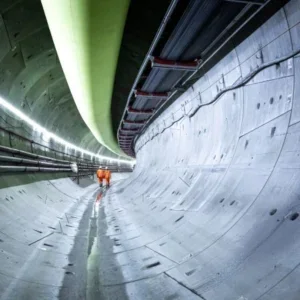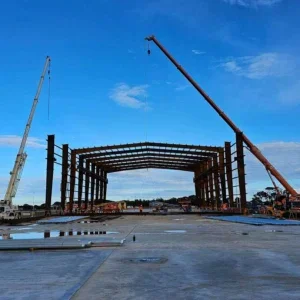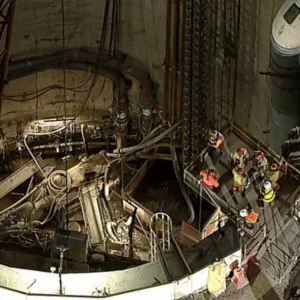The world’s largest TBM, a mammoth 15.2m diameter machine manufactured by Herrenknecht, has just been accepted by the client and contractors following factory trials in Germany.
The S-300 EPB shield, deemed a Mega TBM by the manufacturer, will be used by Spanish contractors Necso Entrecanales Cubiertas SA and Ferrovial Agroman SA in JV to bore the 3.65km long north tunnel for Madrid’s M-30 urban motorway. On 6 June a delegation consisting of senior managers from the JV, plus the M-30 client organisation, were at Herrenknecht’s facility in Schwanau, southern Germany, to witness the factory acceptance trials.
Herrenknecht described the shield as “the world’s largest TBM with truly unique features in terms of engineering”. A new cutting wheel concept was developed to accommodate the world beating diameter in clay and gypsum ground conditions, described as challenging – the overburden will reach 75m and pressures up to 6 bar are expected. The head comprises a 7m diameter central cutting wheel, together with an outer cutting wheel that can excavate a diameter up to 15.2m. The cutting wheels can be rotated independently in clockwise and anti-clockwise directions.
Three screws conveyors are mounted in the shield to clear the excavated ground. Two large screw conveyors transport muck generated by the outer cutting wheel to the shield’s belt. A smaller screw conveyor in the lower section of the head clears muck from the inner cutting wheel.
Weighing in at 4,364t, the Mega TBM has 125,268kNm, claimed the highest torque ever installed in a TBM, at its disposal – enough to lift a 410t fully laden Boeing 747 airplane with a 30m long lever arm. When coupled with a thrust force of 316,000kN at 400 bar it is clear the TBM is a giant in specifications aside from its diameter.
As T&TI went to press, the machine is being disassembled for transport to the cargo port of Kehl. It will be loaded onto two ships, one bound for Alicante and the other for Bilbao. Following transport by road to Madrid, site assembly is planned to get underway by 1 August in the TBM’s launch shaft.
After commissioning and testing, tunnelling is expected to get underway by October this year.







